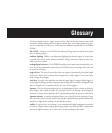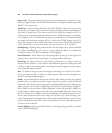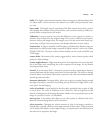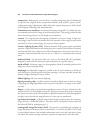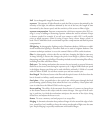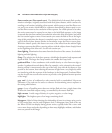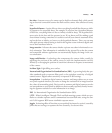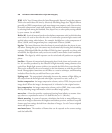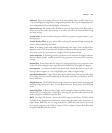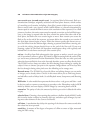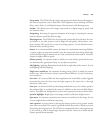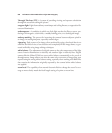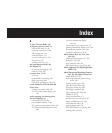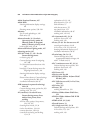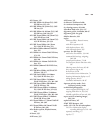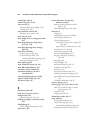midtones Parts of an image with tones of an intermediate value, usually in the 25 to
75 percent brightness range. Many image-editing features allow you to manipulate mid-
tones independently from the highlights and shadows.
mirror lock-up The ability of the D7000 to retract its mirror out of the light path to
allow access to the sensor for cleaning, or to reduce the effect of vibration when using
the Mup setting.
neutral color A color in which red, green, and blue are present in equal amounts, pro-
ducing a gray.
neutral-density filter A gray camera filter reducing the amount of light entering the
camera without affecting the colors.
noise In an image, pixels with randomly distributed color values. Noise in digital pho-
tographs tends to be the product of low-light conditions and long exposures, particu-
larly when you’ve set your camera to a higher ISO rating than normal.
noise reduction A technology used to cut down on the amount of random informa-
tion in a digital picture, usually caused by long exposures or increased ISO sensitivity
ratings.
normal lens A lens that makes the image in a photograph appear in a perspective that
is like that of the original scene, typically with a field of view of roughly 45 degrees.
overexposure A condition in which too much light reaches the film or sensor, pro-
ducing a dense negative or a very bright/light print, slide, or digital image.
pincushion distortion A type of lens distortion in which lines at the top and side edges
of an image are bent inward, producing an effect that looks like a pincushion. See also
barrel distortion.
Playback menu The D7000’s list of settings and options that deal with reviewing and
printing images that you’ve shot. See also Retouch menu, Setup menu, and Shooting
menu.
polarizing filter A filter that forces light, which normally vibrates in all directions, to
vibrate only in a single plane, reducing or removing the specular reflections from the
surface of objects and darkening blue skies.
RAW An image file format, such as the NEF format in the Nikon D7000, which
includes all the unprocessed information captured by the camera after conversion to
digital form. RAW files are very large compared to JPEG files and must be processed
by a special program such as Nikon Capture NX2 or Adobe’s Camera Raw filter after
being downloaded from the camera.
Glossary 497



